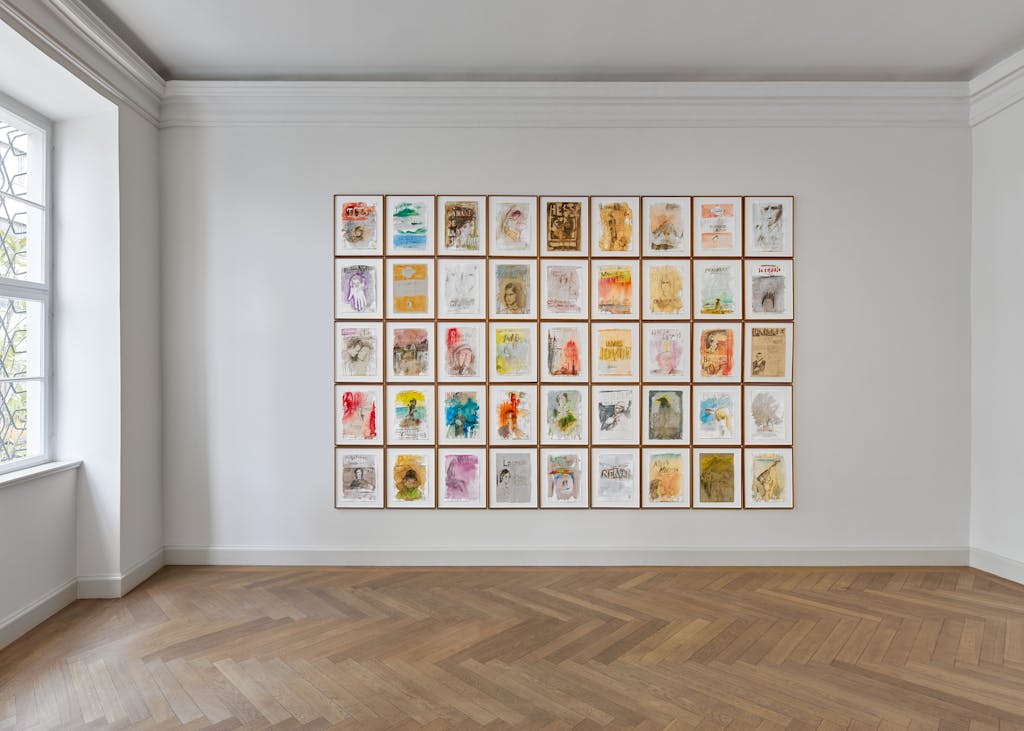Wüthrich has been using books as a material since the 1990s. They appeal to him on the one hand because of the aesthetics and the haptics of the objects, but also because of the literary content, which goes beyond the purely informative. Wüthrich turns the versatility of this source material into formally very different works, with which he creates playful, often humorous and sometimes profound connections.
With the title of the exhibition, Wüthrich refers to the philosophical book of the same title by Michel Foucault (1966; Eng.: 'The Order of Things') and to Jean-Paul Sartre's autobiography 'Les mots' (1963; Eng.: 'The Words') about his early experiences with literature. In both books he ‘discovered analogies’ and they have, according to Wüthrich, ‘fascinated and accompanied [him] in various ways.’
‘But books were my birds and my nests, my household pets, my barn and countryside. The library was the world caught in a mirror. It had the world's infinite thickness, its variety.’ – Jean-Paul Sartre, 'The Words'
Literature undergoes a transformation through Wüthrich's transference into the realm of visual art, while retaining a connection to the content. 'Pharmacie littéraire' (2021), for example, is a wall cabinet in which a multitude of glass vessels, vials and ampoules are lined up, probably containing medicines, liquid or in tablet form. The vessels, as if taken from a pharmacy of the turn to the last century, are labelled with authors and titles of world literature and are here part of an accurate collection of pain-relieving or even healing essences.
The titles of the books with coloured covers, which Wüthrich has fixed to each other at their sides in the work 'Adjectifs' (2022), are hardly recognisable; the books, reduced to their own objecthood, which no longer explicitly thematize the content, now join together to form a composition of colour fields fixed in pairs on the wall in a seemingly strict composition. 'Portraits littéraires' (2022), by contrast, takes the titles as the point of departure for the representation. Wüthrich drew and watercoloured the cover titles of 45 books, many of them significant in literary history. Here, installed in a block, the works on paper appear to us as a sensually appealing library, as a selection that serves as a visual aid and, when viewed, refers to the content of the works.
'Il était une fois' (Once Upon a Time) of 2022 is about the act of reading, about the passage of time. Installed directly on the wall, a light curtain of knotted ribbon page markers bypasses its function as a room divider. Rather, these aids, which mark what has been read in the past, the present state and what is to be read in the future, are transferred into an almost absurd spatial dimension. 'Stratification littéraire' (2023) involves the space in a different way, with numerous books, all in red linen binding, rising up the gallery wall in a brick-like layering. The function of this wall-on-wall is not a static one, and it does not order. This sculpture confronts us as an assemblage that can potentially be expanded endlessly, both in form and content.
Peter Wüthrich varies his pictorial ideas and develops them further. In doing so, he draws from an almost inexhaustible source. In his examination of the printed products of literature, he succeeds in refusing the conventionally assumed functions as a means to pass the time, as working material, as something used for function and pleasure. With allusions to everyday life, architecture and painting, Peter Wüthrich lets us participate in his romantic view of what makes a book, materially and immaterially, and what digital media cannot do.
Peter Wüthrich (b. 1962) lives and works in Interlaken, Switzerland. Since 1992, KEWENIG Galerie has dedicated several exhibitions to Wüthrich at its locations in Cologne and Palma. His works are represented in major collections, including: Espace d'art contemporain HEC, Paris; Kunstsammlung des Deutschen Bundestages, Berlin; Wilhelm Lehmbruck Museum, Duisburg; Suermund-Ludwig Museum, Aachen; State Museum of Contemporary Art, Thessaloniki, Greece; Kunstmuseum Solothurn and Kunstmuseum Thun, Switzerland.
